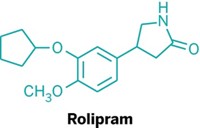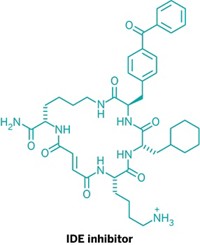Advertisement
Grab your lab coat. Let's get started
Welcome!
Welcome!
Create an account below to get 6 C&EN articles per month, receive newsletters and more - all free.
It seems this is your first time logging in online. Please enter the following information to continue.
As an ACS member you automatically get access to this site. All we need is few more details to create your reading experience.
Not you? Sign in with a different account.
Not you? Sign in with a different account.
ERROR 1
ERROR 1
ERROR 2
ERROR 2
ERROR 2
ERROR 2
ERROR 2
Password and Confirm password must match.
If you have an ACS member number, please enter it here so we can link this account to your membership. (optional)
ERROR 2
ACS values your privacy. By submitting your information, you are gaining access to C&EN and subscribing to our weekly newsletter. We use the information you provide to make your reading experience better, and we will never sell your data to third party members.
Pharmaceuticals
New Compounds Help γ-Secretase Make The Right Cuts
Medicinal Chemistry: Researchers report water-soluble compounds that modulate the activity of γ-secretase, an enzyme associated with Alzheimer’s disease
by Louisa Dalton
January 22, 2014

One popular potential target for Alzheimer’s disease drugs is the enzyme γ-secretase. This membrane-bound enzyme cuts up protein chains, including the amyloid precursor protein (APP). Sometimes the enzyme snips APP into the long amyloid-β peptides typically found in the knotted plaques spread throughout the brains of Alzheimer’s patients. Some scientists want to find compounds that nudge the enzyme toward creating fewer of these long, toxic peptides. Now, researchers unveil a set of compounds that improve on the solubility of particularly promising γ-secretase modulators (Biochemistry 2014, DOI: 10.1021/bi401537v).
Because γ-secretase cuts APP into peptides of various lengths, from about 37 to 42 amino acids, researchers suspect the enzyme plays a key role in the development of Alzheimer’s disease. People with a genetic predisposition toward Alzheimer’s often have abnormally high levels of the longest peptide, Aβ42. This longest, stickiest, least soluble form is the one most likely to crowd together to form plaques.
“We feel that the 42-amino-acid form is the real driver of the disease,” says Steven L. Wagner, a neuroscientist at the University of California, San Diego. In 2003, Wagner and his colleagues began looking for compounds that would lower Aβ42 levels.
After a long slog of screening 80,000 molecules, they got a hit: an aminothiazole bridged aromatic compound. In cell culture studies, the molecule and a group of similar ones lowered Aβ42 levels by modulating the activity of γ-secretase, yet, importantly, did not hinder γ-secretase’s other essential cell signaling duties (Neuron 2010, DOI: 10.1016/j.neuron.2010.08.018).
But there was a problem. “They were very, very insoluble,” Wagner says, “a real hindrance to developing a drug.” So Wagner and his colleagues replaced two phenyl rings in the molecules with heterocycles to improve solubility. Now they report 20 soluble bridged compounds that modulate the activity of γ-secretase.
In human cells overexpressing the gene for APP, the compounds both hinder Aβ42 production and increase levels of the shorter peptides, such as those with 37 and 38 amino acids. This, Wagner says, is ideal for a potential Alzheimer’s drug. The molecules don’t change overall amyloid peptide levels, which means they don’t block γ-secretase’s ability to cut proteins. Instead, the molecules just push the enzyme to cut shorter chains.
Eli Lilly & Co. and Bristol-Myers Squibb had previously developed inhibitors—drugs that block γ-secretase. However, in 2010 and 2012, both companies halted clinical trials of the drugs because they actually sped up cognitive decline. Now, Wagner and other researchers have shifted their focus to γ-secretase modulators, hoping to alter γ-secretase activity without blocking its beneficial work.
The new compounds show promise, says Bart De Strooper, an Alzheimer’s researcher at VIB, a life sciences research institute, and the University of Leuven, in Belgium. Their solubility in water should make them easier to administer to patients. But he adds that it is crucial to make sure they can still penetrate the brain, because as molecules get more hydrophilic they have a harder time crossing the blood-brain barrier.
Based on unpublished data, Wagner thinks the molecules are still hydrophobic enough to get into the brain. He adds that he and his colleagues have further optimized these 20 compounds and now have a pool of approximately 400 novel γ-secretase modulators. They hope to soon have one ready for clinical trials.





Join the conversation
Contact the reporter
Submit a Letter to the Editor for publication
Engage with us on Twitter